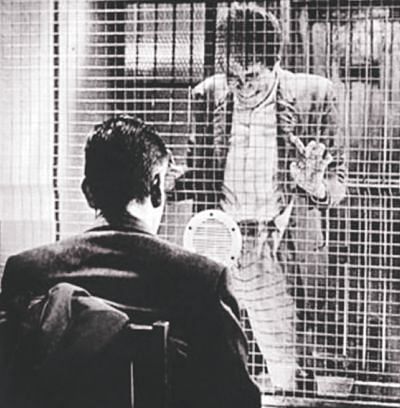'High and Low': Contrasts of the human psyche

Akira Kurosawa is considered one of the most influential filmmakers in the history of cinema, mesmerising audiences and critics alike over the decades, from “Drunken Angel” (1948) to “Dreams” (1990). In between, he delivered masterpieces like “Rashomon”, “Seven Samurai”, “Ikiru”, “Yojimbo”, “Dreams”, “Kagemusha” and “Ran”, among others.
A weeklong Akira Kurosawa festival organised jointly by International Academy of Film and Media (IAFM) and Embassy of Japan in Bangladesh was held at the main auditorium of Bangladesh National Museum (BNM). On the penultimate day of the festival (September 23), “High and Low” (1963) was screened, in the retro 35mm film format.
In a nutshell, “High and Low” (also dubbed “Heaven and Hell”) is a crime suspense thriller. Based on US writer Ed McBain's novel “King's Ransom”, it tells the story of a powerhouse of the Japanese shoe industry, Kingo Gondo (played by Toshiro Mifune, who Kurosawa cast in 16 of his films) of National Shoes, whose plans of accumulating more money to buy off the company falls in jeopardy when a kidnapper attempts to kidnap his son, but takes his chauffeur's son by mistake. A man of principles, Gondo is torn between giving up his ambitions and life as he knows it, and saving an innocent child's life who is in a peril his son was destined for. He eventually pays the ransom and the boy returns, but he is evicted from the company. The police, meanwhile, through rigorous investigation, find and capture the kidnapper, an intern doctor at a hospital --who, at the opposite end of the social spectrum, committed the crime in a sort of inner break-out from the societal divide. Gondo meets the killer in holding, who is unapologetic and almost satisfied of his deed.
Only in terms of the elements, “High and Low” is a fascinating watch. Thematically, the film is rather Hitchcock-like; a sly crime, suspense, digging and finally finding out who the culprit is, it's also unlike other literary works Kurosawa has adapted from, which were from greats like Shakespeare and Gorky. (It's a very little-known fact that Ed McBain – under the changed name Evan Hunter, wrote the screenplay for Hitchcock's immortal classic “The Birds”.) The personal, internal conflicts to the zoomed-out holistic depiction of Japanese society, corporate dynamics, crime investigations -- “High and Low” is quite a few films wrapped in one. The characters are also woven masterfully; Gondo's trusted right-hand man who sells him out fearing that Gondo's is a sinking ship to the meek chauffeur, who is almost apologetic that his son's miscued kidnapping is causing his master the suffering. The calm, sharp chief detective Tokura who drives the investigation and is not shy to resort to deceit to bring the kidnapper to maximum justice to the bald-headed detective adding deft comic relief, the use of foil characters is perfect.
The film also changes pace and genre, from suspense to moral dilemma and corporate competition to police procedure, a glimpse into the criminal underbelly and calm ruthlessness of the kidnapper -- who tries to kill his drug-addicted accomplices, twice, by supplying them overly pure heroin. And then it ends on the enigmatic, film noir sequence where the kidnapper is confronted, and his angst and deranged hatred towards high society is placed in contrast to Gondo's monomyth-like journey --who has lost all his previous wealth, but is in a way set free, working for a smaller shoe company but making the decisions himself.
Cinematographically, the film bears tell-tale signs of classic Kurosawa: the use of long lens, the same scene done from multiple cameras and use of widescreen, crowded frames, brilliant use of static frames to build up tension and swiftly-panning and moving ones to augment action and thrill. Kurosawa's unique idea of using music that conflicts the visual is also seen in it, and serves to great effect. His immaculate attention to detail is also evident all across the storyboard with even small props on the screen adding value.
In an age when filmmaking is becoming more assuring as a career and resources are more accessible to anyone looking for them, films like “High and Low” can be a great lesson; it's not a big budget, technology, extravagant sets and locations that makes a great film, but a good story and great storytelling.

 For all latest news, follow The Daily Star's Google News channel.
For all latest news, follow The Daily Star's Google News channel. 



Comments